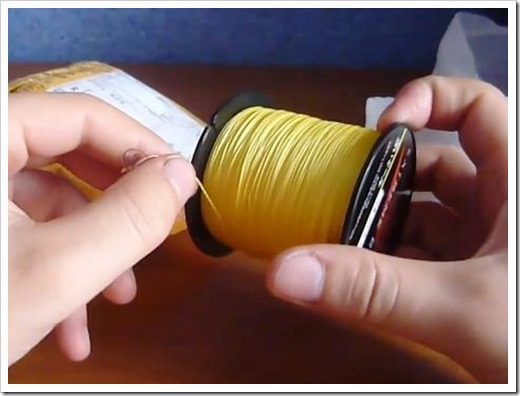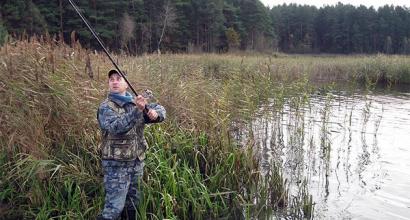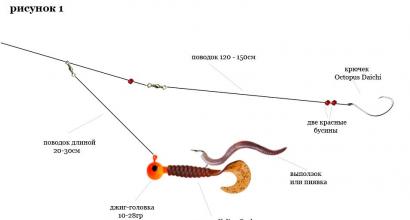What line is best for pike spinning?
Pike is a dangerous predator, for the catching of which special equipment is used. An important role for successful fishing is played by a competent choice of fishing line.
It should be borne in mind that huge fangs represent a danger to the fisherman, and the pike frays the fishing line with small teeth located in the sky.
Types and characteristics of popular woods.
Several types of lines are used to catch predatory fish. They differ in color, diameter, material.
- Color. Experience has shown that it is fundamentally unimportant what color the fishing line has. However, the shade of the selected line affects the game of the bait, so a well-chosen line color increases the effectiveness of fishing. A wide palette of colors allows you to choose the ideal fishing line for specific fishing conditions, in particular, to increase the control of fishing, you can choose a fluorescent version with a glow. Experienced spinners usually choose light shades of fishing line.
- Thickness. The fishermen did not come to a single answer - what thickness is ideal. But everyone agrees that the fishing line should be thin and especially strong. For pike, the most suitable option is a fishing line with a diameter of 0.35-0.4 mm for spinning with an inertial reel and 0.25-0.27 mm for a variant with a spinning reel. Also, the thickness should be selected taking into account the casting distance and the type of bait.
- Material. According to this indicator, fishing lines are used for pike fishing: monofilament, braids, fluorocarbon. Each type has advantages, but also has some disadvantages.
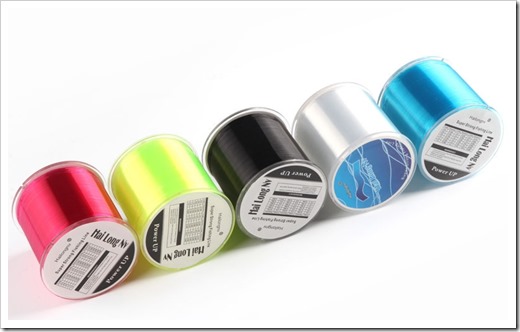
The fishing line should be selected taking into account the conditions of fishing. The mistake in choosing the right fishing line can be compared to choosing a car when you buy a powerful SUV to travel around the city.
Of course, in such a car it is convenient and comfortable, but for urban conditions it is not rational and too expensive to operate. The characteristics of popular lines help you make the right choice.
Monofilament.
This is a one-piece vein made of nylon or durable polyethylene. Such fishing lines have long gained popularity because of their excellent characteristics.
They are strong, elastic, reliable and have excellent extensibility. Monofilament species are great for fishing from a short distance.
In this case, more expensive options are impractical, since there is no special load on the rod and on the fishing line.
The smooth surface of the line makes it ideal for ice fishing, this smoothness allows you to quickly remove the ice. When buying this type of fishing line, you should choose the least stretchable, you also need to pay attention to the spinning icon on the package.
The disadvantages of fishing line include low strength and high extensibility.
Network.
For the manufacture of braids, a special polymer is used. Such a fishing line is a braided cord, which compares favorably with low extensibility and special strength with the same diameter. This type of fishing line is selected by thickness. It is necessary to focus on the breaking load (in kilograms).
It is also worth remembering that when using the braid, the diameter is constantly increasing, so you need to pay attention to the marking parameters, which are indicated after the “#” sign.
Also, this type of fishing line is classified according to the number of cores (threads), it is worth choosing according to this parameter, taking into account the strength of each individual vein.
Disadvantages: price, the appearance of shaggy fibers, requires the use of a coil with perfectly even rings.
Fluorocarbon.
For the manufacture of fishing lines, a polymer analogue of Teflon is used. Outwardly, such a fishing line is difficult to distinguish from monofilament. However, this type differs in characteristics.
The fluorocarbon vein is not visible in the water, has increased strength, sinks faster, and practically does not stretch. This type of line is often used in delicate fishing where camouflage is important.
Also, this type of fishing line is used as a leash, without which it is impossible to catch a pike in practice.
Disadvantages: high cost, so flucarbon line is rarely used as the main line.
Which spinning line to choose for successful pike fishing?
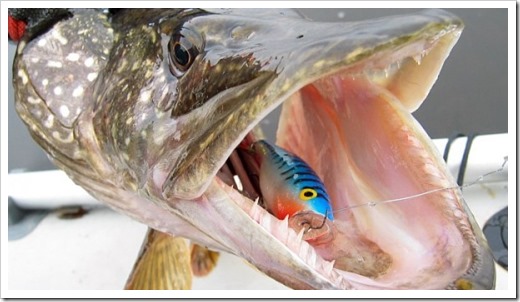
For catching a pike predator, a well-tuned tackle is used, in which all elements play an important role. At the same time, the fishing line must be strong, with a good breaking load, it must perfectly withstand a lot of weight.
Optimally, the thickness of the vein should be 0.2-0.3 mm. When fishing in large water bodies, where there is a chance of catching a large predator, it is worth using more durable vein options.
These simple tips will help improve the efficiency of fishing. Then, over time, each angler has his own priority types of lines.
But so that the purchase of the fishing line does not spoil the fishing, you should immediately test it for breaking in the store and clarify all the nuances of the characteristics indicated on the packaging.
More on the topic:

